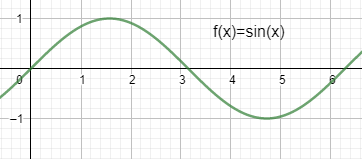Question
Question: How do you graph the derivative of \(f(x)=\cos (x)\)?...
How do you graph the derivative of f(x)=cos(x)?
Solution
In this question we will first find the derivative of the given function f(x) which is equal to cos(x). We will take the derivative of the function using the formula dxdcos(x)=−sin(x), and then simplify the expression and plot the graph for the resultant function.
Complete step-by-step solution:
We have the given function as f(x)=cos(x). Now we have to find the derivative of the function. The derivative of the function can be taken as:
⇒dxdcos(x)
Now we know that dxdcos(x)=−sin(x) therefore, on using the formula in the above expression, we get:
⇒−sin(x), which is the required derivative of the function therefore, we can write it as:
f′(x)=−sin(x)
Now we know the sin(x) graph starts from the origin and goes upwards and then goes downwards from the value of π and then goes upwards again and reaches the value of 0 again after π. It can be plotted as:

Now in this question we have to plot the graph of −sin(x). Since it is the negative graph of sin(x), the graph will have all the same values but it will be inverted. It can be plotted as:

Which is the required solution.
Note: The general format of the sin(x) function should be remembered as y=asin(bx+c)+d
Where a is the amplitude of the equation which tells us the maximum and the minimum value the graph would go from the base line value,
b is the period of the graph,
c depicts the shift of the equation, positive shift represents that the graph is shifted towards the left and negative shift represents the graph shifting to right.
And d is the baseline of the equation which tells us whether the graph is going upwards or downwards.
